Metadata Management in Big Data Systems: A Complete Guide
Bài đăng này đã không được cập nhật trong 7 năm
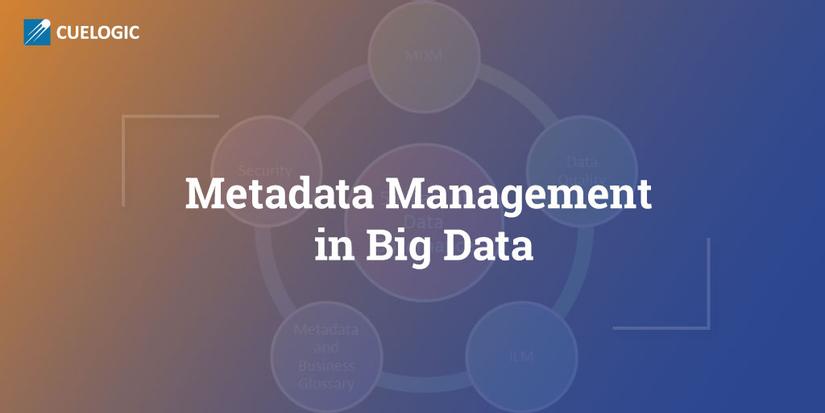 Metadata management is one of the major components of any metadata initiative. Some organizations have a beguiling time when trying to incorporate metadata into their metadata management process.
Metadata management is one of the major components of any metadata initiative. Some organizations have a beguiling time when trying to incorporate metadata into their metadata management process.
A metadata management strategy is central in ensuring that data is well interpreted and can be leveraged to bring results. Such metadata management strategies include collection, storage, processing, and cleaning. Likely, metadata management jobs have risen through the years.
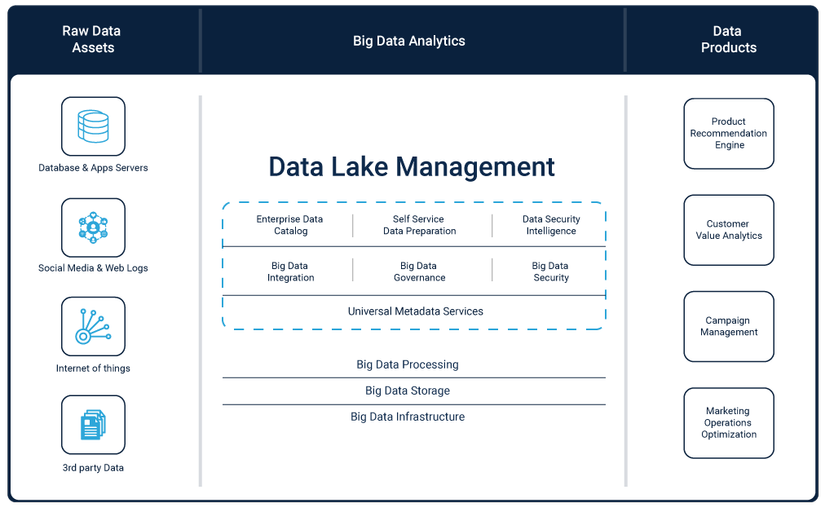
# Understanding Metadata Management for Big Data
The metadata management process is one of the most blazing themes in our industry as Global 2000 organizations and extensive government offices are starting to comprehend that without exact, convenient, and surely known metadata system, they can’t understand the advantages of cutting-edge research, enormous data, versatile examination, metadata management data warehouse, and the tremendous repository of data openings from the web of things (IoT).
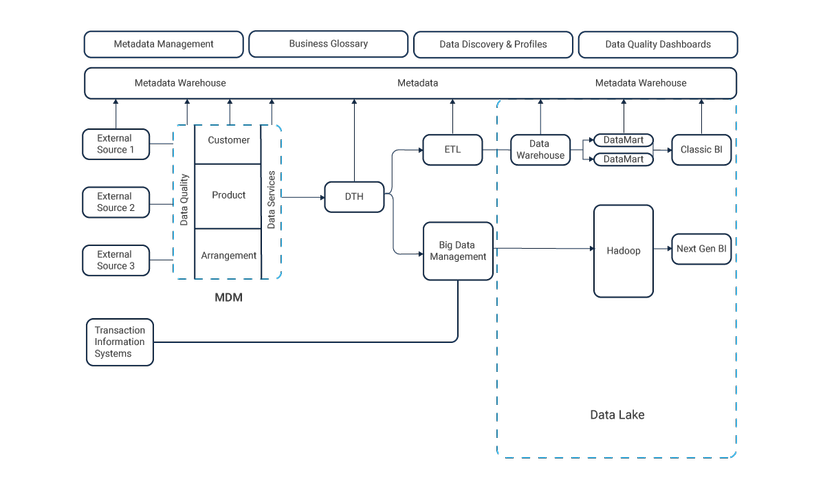
-
The act of metadata management is central to each part of [data management](http://cuelogic.com/blog/talking-to-your-data-from-data-management-to-visualization). Envision attempting to manufacture feasible data management without metadata management. It just cannot be done. -
Metadata analysts invest a large portion of their energy working with metadata and a little measure of time on metadata. -
Without appropriate metadata management, these stewards would be constrained to working with just Sharepoint, Excel spreadsheets, Word archives, and a group of non-computerized procedures to achieve their essential assignments.
Good data management in big data needs good metadata management. A well-developed metadata management system needs mechanized and precise metadata management frameworks , metadata development, metadata stores, and brilliant records in metadata innovation (IT) condition.
The Metadata Management Management Association (DAMA) effectively expresses that each part of big business metadata management has profound associations with an innumerable number of companies and flourishing industries.
Decoding the Management for Metadata
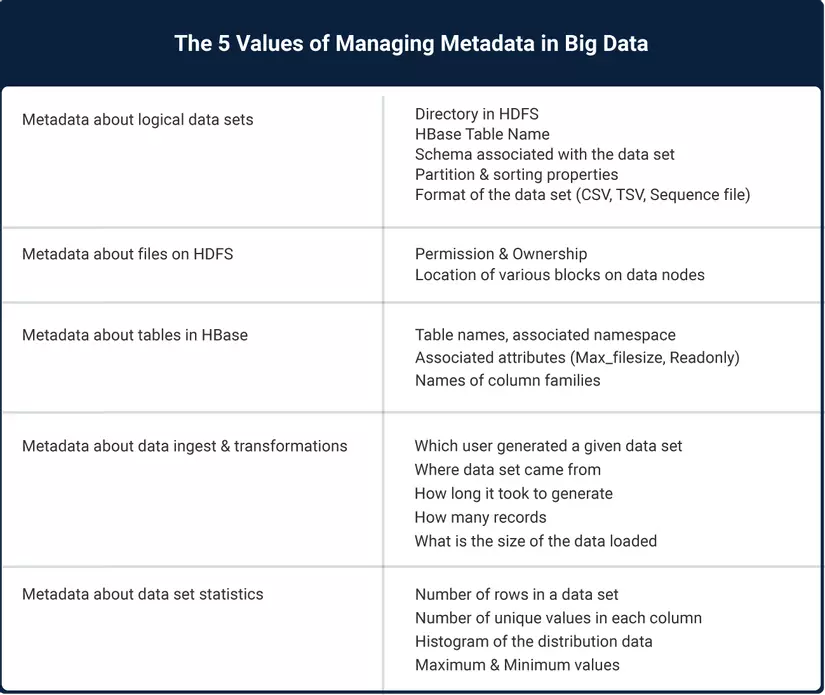
In case you’re in the field of metadata management then you’d be familiar with metadata being called the ‘data of data.’ There are many prescribed procedures and phrasing that should be comprehended to work in this profession successfully. The fundamental accepted procedures of metadata management are in some ways tied to its definition.
-
The exemplary meaning of metadata is “data about data.” Unfortunately, this definition is restricting as metadata is about substantially more. -
Metadata is a sort of data that carefully portrays the who, what, when, where, why, and how of an association’s data, forms, [applications](http://cuelogic.com/custom-software-development), resources, business ideas, or potentially different things of interest.
All the more essentially, metadata gives the setting to the substance of all excellent data resources.
From this definition, we can see that metadata is a kind of data. Like data, metadata is an arrangement of digitized systems, widgets or data that gives learning aspects to it. This learning hopes to answer the who, what, when, where, why, and how. The 5 Ws and 1 H
The 4 Characteristics of Any Metadata Management Model
Incredible metadata management has four essential qualities. It is bland, coordinated, present and recorded.
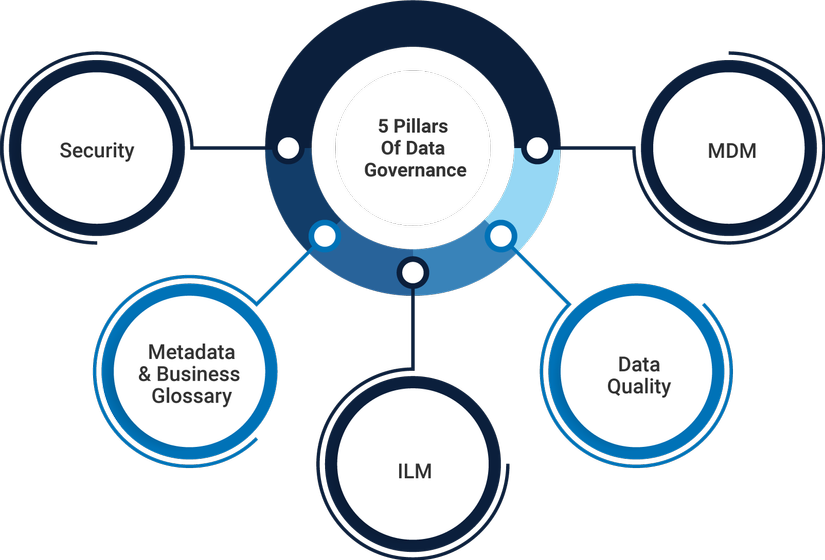
- Non-Specificity
o Non-specific implies that the physical metadata shows hope to store metadata by metadata branch of knowledge rather than being application-particular.
o The issue with application-particular metamodels is that metadata branches of knowledge extend their degree and can even change after some time. To come back to the precedent, today Oracle might be the database standard.
o Tomorrow the rule might change to SQL Server for cost or similarity points of interest. This circumstance would make unnecessary extra changes the change to the physical meta show. Further, we ought not to have application-particular names into meta display like ACCT REC (i.e., Records Receivable).
o It has inputs (Metadata coming in), procedures and yields (Metadata turning out) like some other framework.
o Accordingly, there is no motivation to have our meta show have application-particular names for our properties or tables as this is constraining and a poor meta demonstrating practice.
- Incorporated Perspective
o A metadata frame gives a coordinated perspective of the venture’s real metadata branches of knowledge. Assume that you require a data frame with business definitions for the metadata components and catches specialized metadata ancestry.
o Meta modelers wrongly put the business metadata (descriptions) in a different arrangement of tables and the specialized metadata in an alternate method of tables with no connections.
o Subsequently, if the business is thinking about including another “client compositions,” the metadata group can’t inquire the metadata heredity related data in the model to perceive what metadata components would be affected by this business choice. This severely restricts the power that metadata management can give.
o The best routine with regards to having an incorporated meta demonstrate is missed by most by far of associations as they executed numerous littler metadata management arrangements, instead of an undertaking wide metadata management exertion.
- Predictive
o A generally solid meta display contains metadata that identifies with both the present condition and the future/arranged condition.
o Metadata management is hugely significant in comprehension and dealing with our current business and specialized scene; in any case, it can likewise assume a focal job in our association’s tentative arrangements.
- Chronicled And Timed
o Ultimately, metadata models are authentic as a decent meta-model will incorporate verifiable perspectives of the metadata, even as it changes after some time. This enables a partnership to see how their business has developed throughout the years.
o This is mainly basic if the MME is supporting an application that contains authentic metadata, similar to a metadata distribution center or a progressed investigation application.
o An in a general sense sound meta show stores the two definitions since they have legitimacy, contingent upon what metadata you are breaking down (and the age of that metadata). Features Of Good Metadata Tools
There should be robust tools to help users access metadata and enforce all the rules defined by executives. Some of the features these features include:-
Features Of Good Metadata Tools
There should be robust tools to help users access metadata and enforce all the rules defined by executives. Some of the features these features include:-

- Test Data
o Understanding and casting a preliminary analysis of a larger metadata management tool which has a data frame is best done with some test information that summaries the overall structure and content of the data.
- Information Stats (Profiles)
o Details give answers to some basic inquiries like a check, particular qualities, top utilized qualities, invalid tally, greatest and yeast qualities.
- Heredity
o Heredity causes you to comprehend the start of information, and how it voyaged and what are the different changes that occurred before it spanned to you. Further, it likewise empowers you to acknowledge what another place this information is being utilized.
- Past Communication
o Correspondence in the way to compelling metadata administration, so it’s essential to tie all the discussion identified with metadata in one place. Likewise, every one of the remarks and comments with respect to that metadata ought to similarly be accessible here.
- Association with Other Metadata
o For MDM instrument It is urgent to discover a relationship among information with the goal that information look winds up conceivable. There are different approaches to accomplish this – manual, human curation, consequently through metadata semantic coordinating or naturally through information coordinating.
Some Metadata Management Tools
A majority of metadata management associates and companies use big data solutions tools mainly for metadata management data warehousing. The role of metadata management in data warehousing is quite crucial to maintaining the integrity of metadata.
- Informatica
o Its metadata management solutions are the Metadata Manager, Business Glossary, Axon and Enterprise Information Catalog.
o But the challenge in front of this company is to quickly demonstrate the ability to bring the acquisition of Diaku’s Axon into a set of metadata management solutions functioning as a seamlessly integrated solution.
- OvalEdge
o OvalEdge is a comprehensive metadata management tool along with ETL. As per its customers, it provides the state of art UI which makes collaboration efficient.
o It has a patent pending relationship algorithm which finds all the relationships amongst data. To facilitate compliance, it has a provision to predefine rules and procedures at the very core.
- Alation
o sIts metadata management solution is the Alation Data Catalog. Despite being small, they have ample brand recognition in the market and have gained some traction with their data catalog. But their core metadata management functionalities such as data lineage and impact analysis are very limited.
- Amazon Web Services
o Metadata management in AWS has been hailed as a streamlining procedure that significantly reduces the time needed to synergize large datasets
o Delivery companies and metadata management warehouse corporations too have been executing metadata management in AWS
- Collibra
o Collibra has Collibra Connect for metadata management tools, with a use case of data governance use case and support of regulatory requirements.
o But customers have given a wide range of mixed reviews to Collibra for impact analysis, lineage and semantic frameworks.
- SAP HANA/VORA
o A great tool employed for managing large datasets with stable architectures composed in cloud settings that use Java, Scala, Python and a ton of other software in delivering comprehensive metadata management tools.
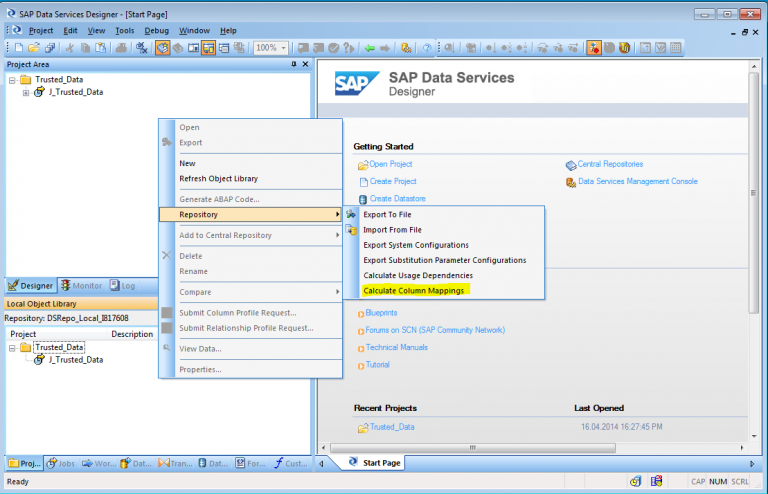 Source:- https://wiki.scn.sap.com
Source:- https://wiki.scn.sap.com
o SAP also creates extensible products that can track the flow, spread and the entire workflow of the data from source to sink.
- Spreadsheets
o A standard tool for storing data, Macros and Visual Basic when combined with Spreadsheets have been used and are useful for conducting experimentation on the metadata that companies generate.
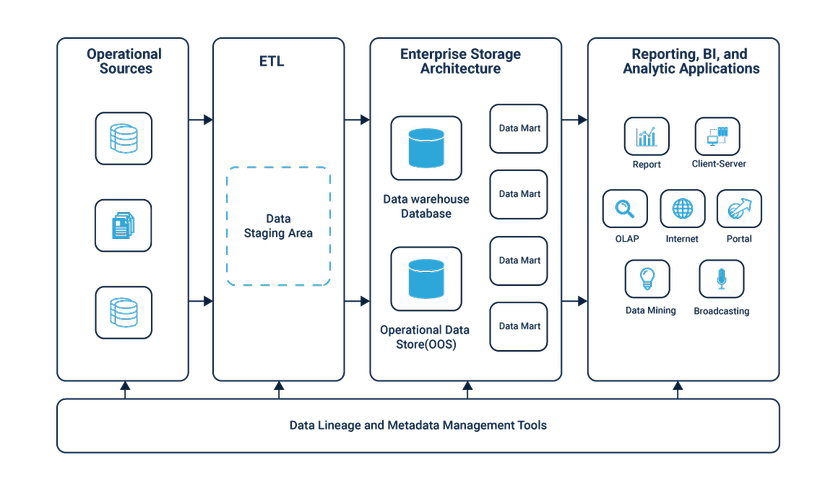
What are the types Of Metadata?

- Metadata Repository
o This is the business’ first far-reaching term to allude to the metadata management framework. The term alludes to the meta dataframe and normally anmanagement programming bundle that may have been bought. It is one of the most important segments of the MME.
- Specialized Metadata
o Specialized metadata gives the engineers, DBA (metadatabase directors), specialized clients, and other IT staff individuals the data they have to keep up, develop, and viable deal with an association’s IT condition.
o Specialized metadata is totally basic for the progressing upkeep and development of the distribution center. Without specialized metadata, the undertaking of examining and actualizing changes to a choice emotionally supportive network is fundamentally more troublesome and tedious.
o This includes – column structure of a database table, header rows of a CSV file and files created as JSON, XML or Avro files.
- Business Metadata
o Business Metadata includes security levels, privacy levels, and acronym levels.
o Both IT and business need quality metadata to understand the information on hand. Without useful business metadata being available, the organization is ripe for making riskful decisions from faulty data.
How To Implement Best Practices?
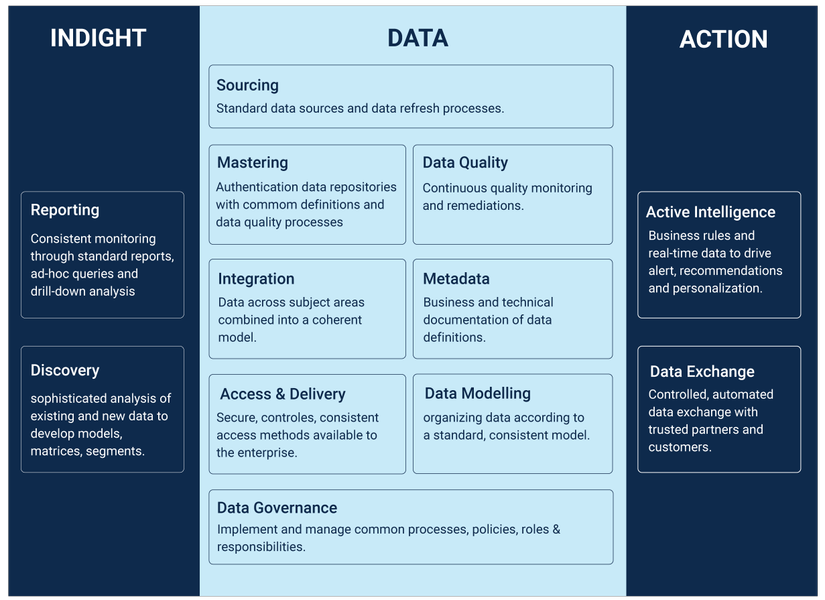
- Start From The Top
o Metadata was most likely a confined corporate instrument before. In any case, associations separate and distribute their stores of data and the information is shared over a few divisions and lines of business.
o It’s inevitably critical to make an institutional metadata administration process and scientific categorization for your whole business with an eye toward wiping out little use contrast between offices.
o On the off chance that that sounds bureaucratic, well, perhaps it is – however it’s the sort of move up-your-sleeves exertion that is at last justified regardless of the agony.
o This best down methodology implies parsing information as indicated by how it’s utilized by the whole organization, among divisions and working together with unstructured outside information. Intra-department types ought to be tended to, and custom metadata management use cases dispensed with or supplanted.
- Get Everyone Together
o Another recommended metadata management best practices are to bring together all team members and make sure to store together metadata stores that can be accessed to by all the real stakeholders in your enormous list of data contacts. The pattern nowadays is toward cloud-based metadata stores, which significant cloud sellers can give.
o Better yet, user management and sharing tools to ensure that no one is left out and everyone has something to add and take from the mix.
- Let Everyone Take Control
o To accomplish a level of understanding between the different divisions, it’s insufficient to issue a decree from the peak. It’s essential to accumulate the general population who really utilize the terms in a similar space to hash things out.
o They have to clarify how and why they use a specific information depiction. Unobtrusive employments of metadata go back to the days when each corporate and government officials was loaded up with maverick Microsoft Access databases, which were worked to evade an exhausted IT office.
o Before the appearance of enormous information, the general population in the trenches developed smart metadata management use cases. Make sure to welcome those fearless warriors to the gathering.
- Plan for changes and updates
o A stable institutional metadata store will be utilized vigorously and motivate new uses and advancements for existing procedures. Fully expecting that, plan a process for the simple accommodation of new thoughts, careful assessment of legitimacy and fast arrangement when vital.
- Keep in mind your accomplices
o Keep in mind that you’re progressively sharing your information and in this way opening your metadata management frameworks to accomplice organizations, which are doubtlessly doing every one of the things you’re doing with a metadata administration procedure to deal with your gathered data.
o Consider any cover with your accomplices and how they characterize the information that the two gatherings think about essential. Those discussions are in any event as necessary as the ones you have in-house.
o All around overlooked metadata and highly ignored big data are indivisible. Completing a complex and critical activity with anyone requires completing an extraordinary event with both. Perfect and highly characterized metadata has a significant effect in conveying excellent business insight results.
- Computerize Metadata Retrieval
o Ideally, you need to mechanize the catch of big data streams metadata upon information ingestion and make repeatable and stable ingestion forms.
o An information lake administration stage can consequently create metadata in light of intakes by bringing in Avro, JSON, or XML documents, or when information from social databases is ingested into the information lake.
o Mechanization is fundamental for building adaptable engineering, one that will develop with your business after some time.
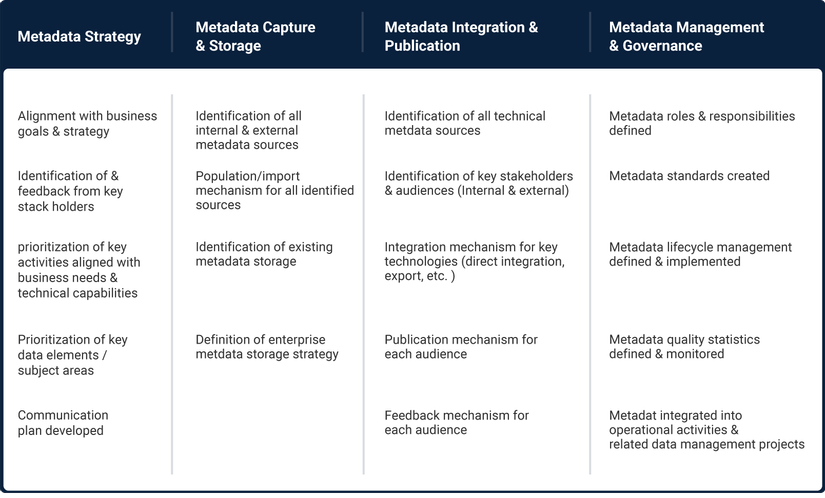
Concluding Terms- The Future of Metadata Management
Metadata has seen a tremendous shift in its position as the most critical component of the application requirements of modern information systems. Most modern systems are web-based, either within the organization (Intranet) or the public.
In the latter case, especially, metadata is the gateway to improving communication between heterogeneous information systems and creating entry points between user client workstations and the information servers.
-
Metadata management thus will see a constant rise in being the staple data source for electronic businesses between information systems. -
Businesses will learn to separate the primary information resources from data and processes (metadata system) providing access to those resources. -
The technology, however, has predicted limitations varying from the need to develop a technology that replaces a CMOS for processors through the use of more efficient storage devices. -
Better refined queries with better-constructed databases will dominate the need for parallelism of algorithms acting on data resources. As a result quality metadata will be the basis for the solutions. -
Metadata will thus become a logical “map” by which unanticipated or unknown future users can navigate through the information and data. It will also become the breakdown for auditors to review your system and even do a post-breach damage assessment.
Metadata management thus holds the light to safer management practices in the future where companies may be marred by leaky data or incorrect instances.
It will thus be a beacon to enable e-discovery and a way to appropriate data security and information privacy.
All rights reserved